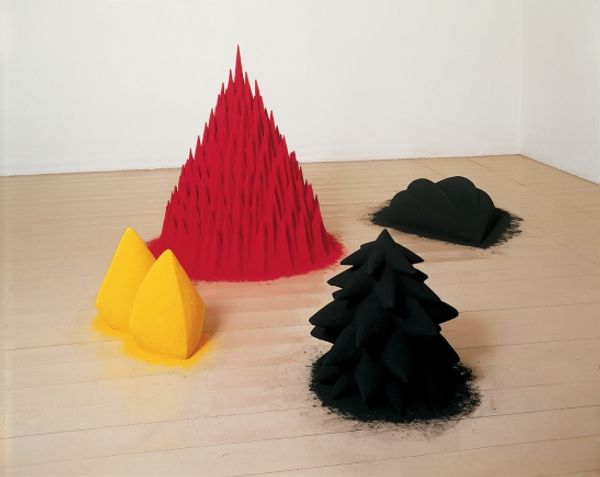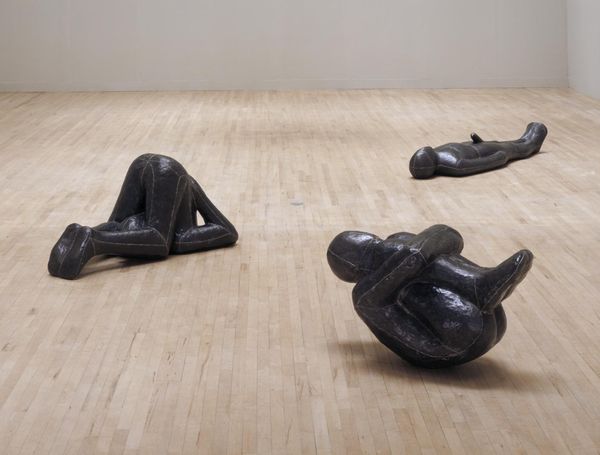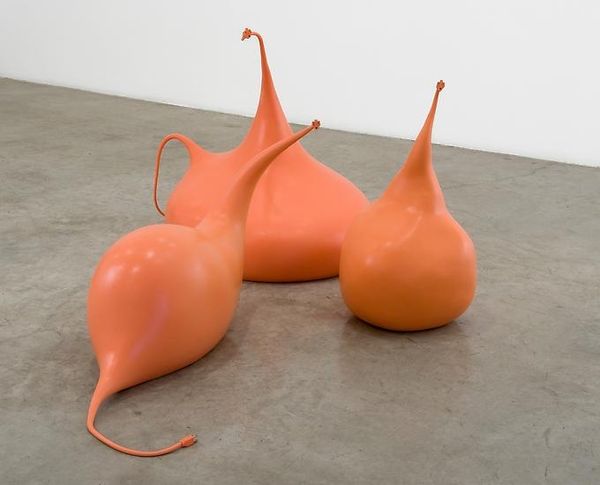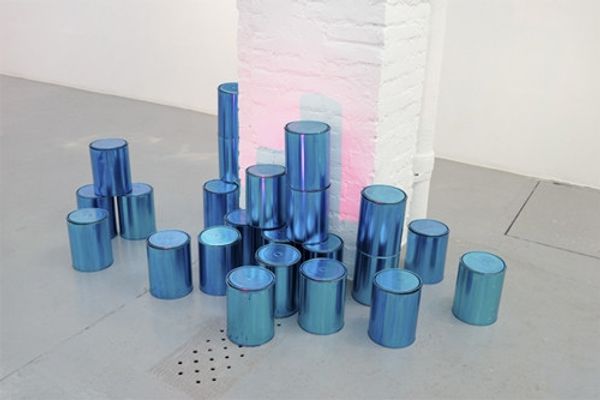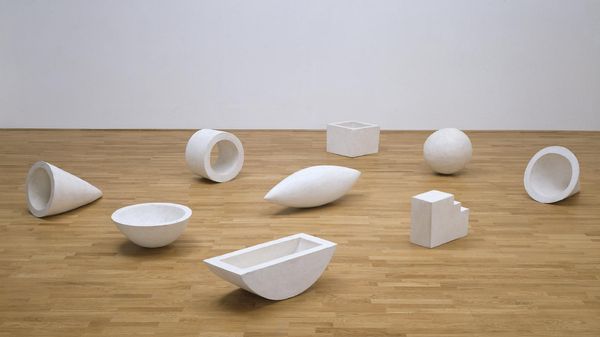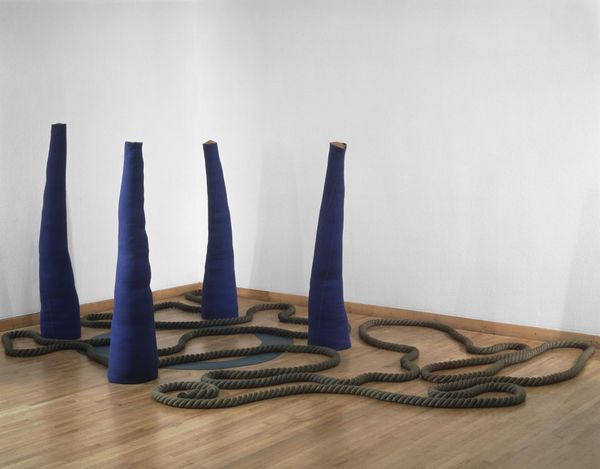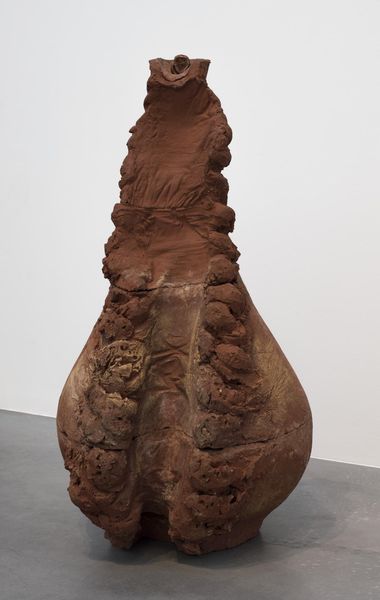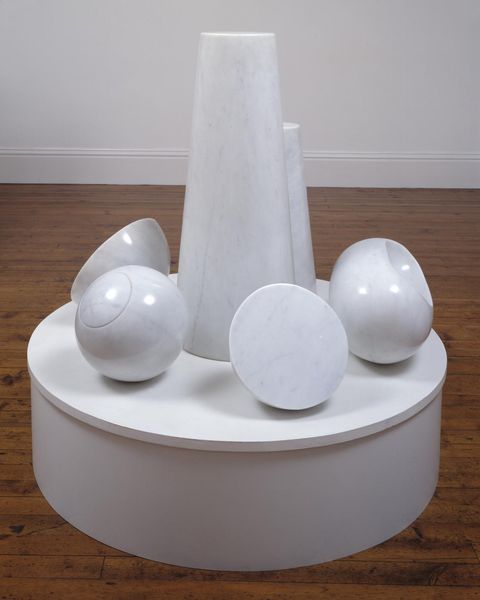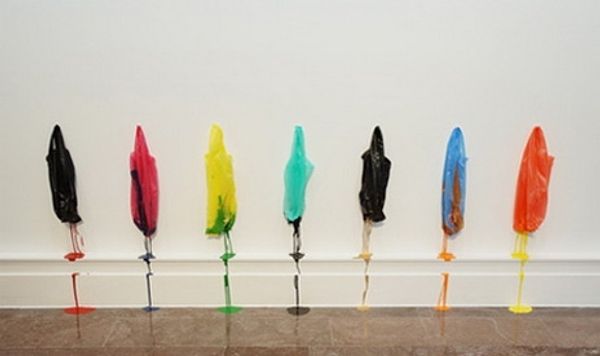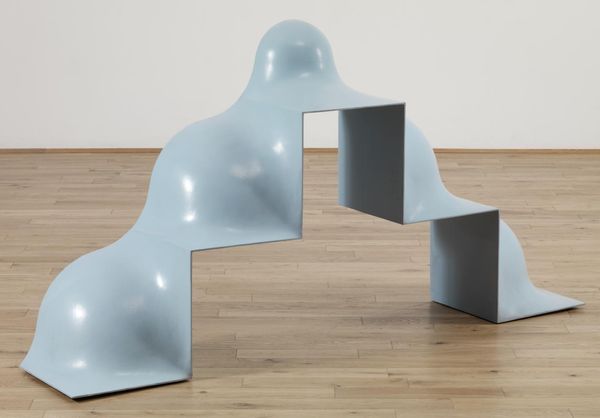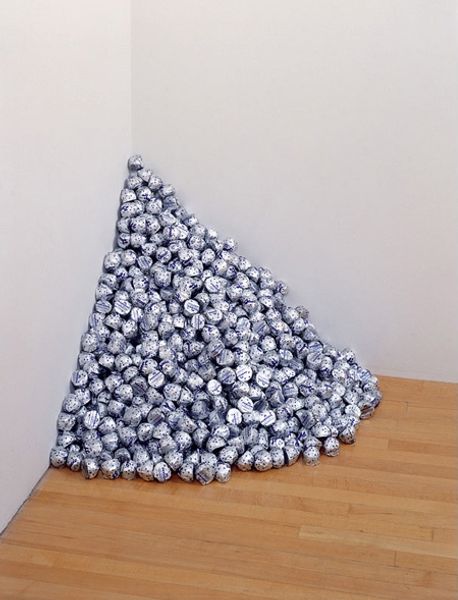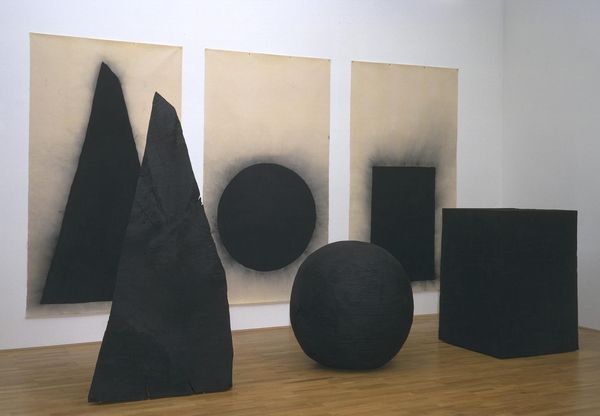
Dimensions: Overall display dimensions variable
Copyright: © Anish Kapoor | CC-BY-NC-ND 4.0 DEED, Photo: Tate
Editor: Here we have Anish Kapoor's "Untitled" installation at the Tate. The forms are so biomorphic, and the blue pigment is quite striking. What political or social narratives do you think Kapoor is engaging with here? Curator: Well, the intense pigment he uses, often associated with ritual and the spiritual, particularly in Eastern traditions, immediately provokes questions of cultural appropriation. Editor: Appropriation? How so? Curator: Kapoor’s heritage is Indian, but his work is viewed through a Western art lens. Are we celebrating cultural exchange or perpetuating colonial power dynamics by showcasing these forms in a Western institution? Editor: That’s a perspective I hadn’t considered. Food for thought. Curator: Indeed. It compels us to consider the ethics of representation. Editor: Thanks, I will be researching that further.
Comments
Join the conversation
Join millions of artists and users on Artera today and experience the ultimate creative platform.
tate 6 months ago
⋮
This untitled sculpture comprises three ground-based, free-standing forms placed in a diagonal row, and a fourth form affixed above them on the gallery wall. Each shape evokes a hybrid of the natural and the man-made, as they are abstract and stylised yet curiously organic. The relationship between the four separate forms is determined by their shared colour – an intense blue – and their spatial alignment – a geometrical arrangement that seems to link the forms together. This arrangement encourages the spectator to read the ground-based forms consecutively in terms of height, from the lowest, which is furthest from the wall, to the tallest, which is closest to the wall. The lowest is round, but unevenly so, resembling a coiled ball. The next juxtaposes a spiked base of outward-thrusting cones coloured grey with a rounded, phallic upper part coloured blue. The tallest unites a round base with a conical top; its undulating surface evokes the textures of draped fabric or waves. On the wall, the slightly flattened ball shape of the fourth form resembles a stylized rose bloom.

